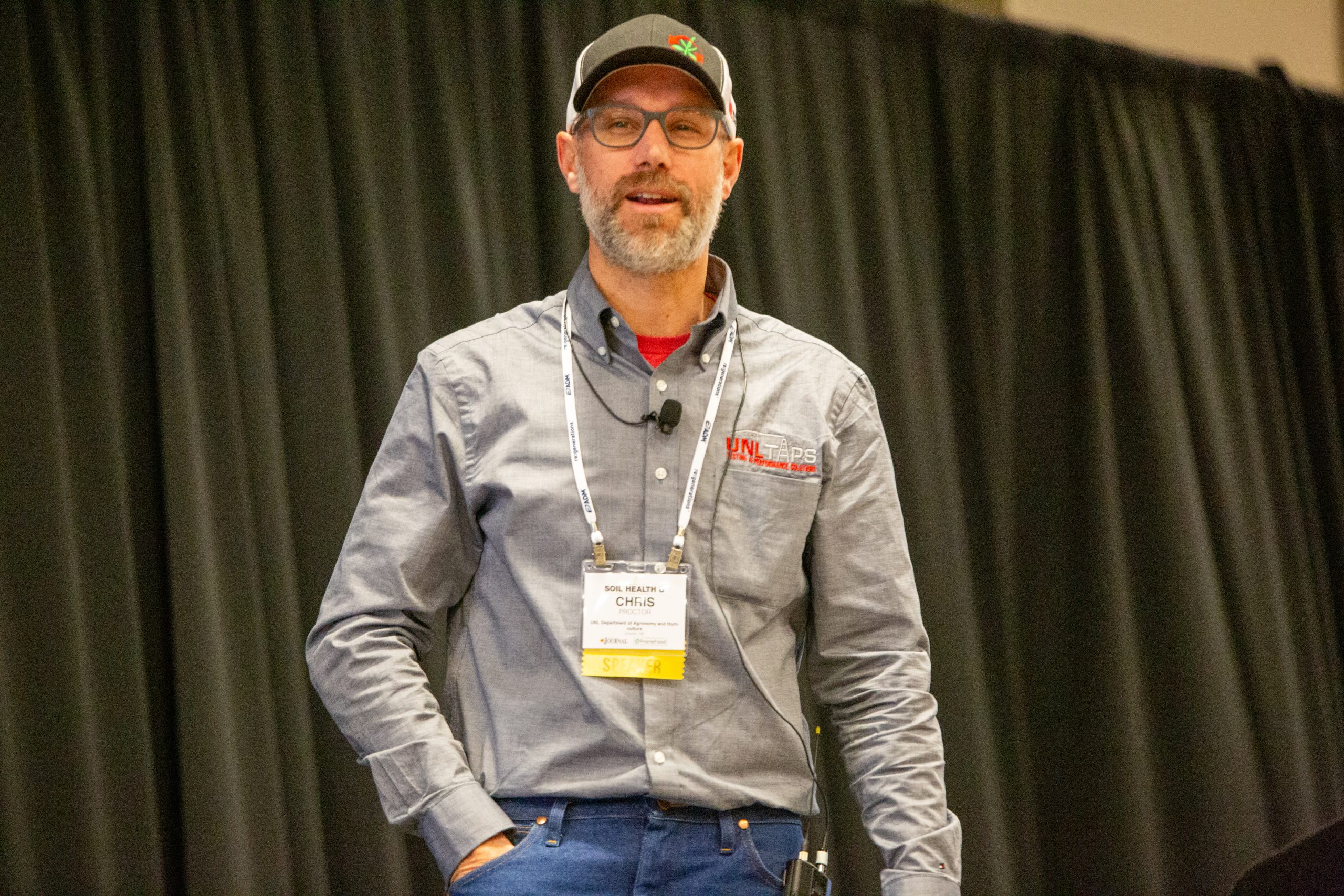Herbicide-resistant weeds have been a long time in coming, Chris Proctor, University of Nebraska-Lincoln weed management Extension educator, told attendees recently at Soil Health U in Salina, Kansas.
No-till practices were adopted in the late 1990s, and when Roundup Ready technology was developed, the weeds started to become resistant, Proctor believes.
“We start seeing resistance coming into the world, but what is interesting is, as no till increases, there’s a lot of good that comes from it,” he said. “We inherited a few challenges along the way.”
Now water hemp is resistant to multiple herbicides, and even with five modes of action, it’s tough to kill. Pigweed in southern regions of the United States is glyphosate resistant.
Palmer amaranth is showing resistance to 2-4-D dicamba, Proctor said. “We put all that in soybeans, (and) that was supposed to solve all our problems, and now here we go again.”
“Resistance is only increasing, right?” he added. “It’s just a growing problem that we’re looking at. So what makes pigweeds in particular hard to manage? What is it about these particular weeds that makes our life difficult?”
Proctor said it’s often the time of emergence, noting that producers need to get out in the fields to manage them as soon as they start to emerge.
“We want to catch them when they’re small,” he said.
That is important because as the weeds get bigger, they will continue to spread.
“It’s not just one flush and you’re done,” he said. “They keep coming.
It takes a combination of tools to address weed control, Proctor said.
If the field is scouted and water hemp or palmer amaranth are spotted just emerging, there are only four days to address it, Proctor said.
“It’s time to get out to the field and do something about it.” he said. “How long does it take from the day you see something to get organized and get a sprayer on the field and do something about it?” he asked the audience.
During the session, the common answer for this was about two days if everything goes like it should.
“You might have the best of intentions to get out there in two days, and now you got a windy day,” he said. “So that’s another day you missed, or you catch a rain, or something breaks down, or you called the co-op and they got behind a day or two.”
Palmer amaranth grows up to 1 foot tall within two weeks to 16 days, he said. “It grows incredibly fast. Your window of opportunity is really short.”
On a study with cotton, Proctor said researchers tested a theory about how long it would take to cover a field plot in palmer amaranth. The first year, scientists planted one plant in the south end of a field.
“They knew it was Roundup resistant,” he said. “They didn’t do anything to it. They went out, they sprayed the cotton field with just Roundup, nothing else.”
Sign up for HPJ Insights
Our weekly newsletter delivers the latest news straight to your inbox including breaking news, our exclusive columns and much more.
The cotton field was harvested, and the following year they came back to a “little patch” of palmer amaranth. The same scenario was repeated with Roundup being sprayed on the field to manage the weeds and then the harvester run through it.
“What do you think it looked like the next year?” he said. “[It] spread it across the whole field.”
Proctor finds it interesting how it quickly palmer amaranth can spread.
“But as soon as you cover that entire field, now you moved into a scenario where you lost some of the tools that were available to you,” he said.
In the third season, the whole field was covered, and there were so many weeds in it that the scientists couldn’t get the harvester in it.
“From a single plant to a crop they couldn’t harvest,” he said.
Cover crops can help control weeds. The more biomass left on top of the soil, the less chance weeds have to germinate and grow. Proctor said one research project from Kansas State University looked at different cover crops and mixes, and the amount of biomass left behind as it related to the density of weed populations. It determined that which cover crop is used doesn’t make much of a difference but showed that weeds are smaller when a cover crop is used.
“Biomass really is king, and I think a lot of you who are working with cover crops have learned this along the way,” he said. “For a lot of the things that we like to see, in terms of benefits from cover crops, the more biomass we can get, often the more benefit we offer.”
Proctor was fascinated by information from the study that showed how long it took for weeds to emerge without the use of a cover crop.
“If there’s no cover crop, we reached 50% emergence by May,” he said. “If we had a wheat or oat cover crop, that shifted that 50% emergence timing by almost a month or so. Now, we bought ourselves a month in terms of emergence timing of cover crop. Hopefully that that sparks something in your mind.”
It didn’t necessarily prevent the emergence, just delayed it.
“But it shifted it so just having that shift and emergence I think can make an enormous difference in how we manage some of these pig weeds,” he said.
For more information about Soil Health U, visit www.soilhealthu.net.
Kylene Scott can be reached at 620-227-1804 or [email protected].




